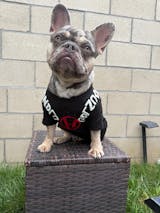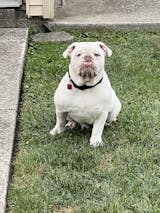Why Does My Dog Excessively Lick?
If you have ever noticed your dog licking themselves non-stop, you’re not alone! Many pet owners have seen their dogs engage in what seems like endless licking, whether it's their paws, belly, or even their nose. While licking is a normal behavior for dogs, excessive licking can be a sign that something’s not quite right. If your dog is constantly licking, it’s time to dig a little deeper into the possible causes.
Let’s explore some of the common reasons your dog might be licking excessively, and provide helpful dog care tips on what you can do to help it!
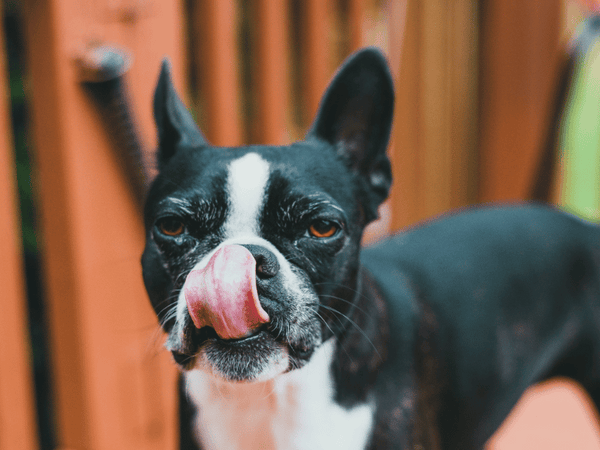
1. Skin Condition Troubles:
Dogs love to keep themselves clean, but if your dog is licking in a specific area over and over, they might be dealing with a skin condition. Skin conditions in dogs can range from minor irritations to more serious issues like hot spots, rashes, or infections. When your dog feels itchy or uncomfortable, they may lick to relieve the irritation. If the licking gets worse and you see red, inflamed skin or open sores, it’s time to take action.
Common skin conditions that might cause excessive licking include bacterial or fungal infections. Yeast infections, in particular, are notorious for causing itching and licking, especially in areas like the paws, ears, and folds of skin.
2. Food Allergies:
Just like humans, dogs can suffer from food allergies. If your dog suddenly starts licking more than usual, it could be a reaction to something in their diet. Common food allergens for dogs include beef, chicken, dairy, and wheat. These allergies can cause digestive issues, skin irritation, and in some cases, excessive licking.
If you suspect your dog’s licking is related to a food allergy, consider switching to a hypoallergenic dog food or try an elimination diet, where you remove potential allergens and gradually reintroduce them to see which ones cause the reaction. It’s best to ensure your dog’s nutritional needs are met while addressing the allergy.
3. Environmental Allergies:
Just like us, dogs can suffer from seasonal or environmental allergies. Pollen, dust mites, mold, and even certain cleaning products can trigger allergic reactions from your pup. If your dog starts licking their paws more often or rubbing their face, it might be due to allergens in the air or in their surroundings.
For example, during pollen season, a dog’s paws can collect pollen when they walk outside. When they lick their paws, they’re trying to soothe the irritation. That's where Squishface Wrinkle Wipes can come in handy. With the powerful ingredients of ketoconazole and chlorhexidine, these wipes are sure to keep your pup clean while fighting against bacteria, yeast, and fungus. These handy dog wipes can essentially be used from head-to-toe, and ensure your pup is clean in-between baths.
To go a step further in managing mess and moisture—which can lead to licking and discomfort—Squishface Slobber Towels are a must-have. Bulldogs, Boxers, and other drooly breeds are notorious for leaving behind slobber, especially after meals or water breaks. Excess drool around the mouth and chin can create the perfect environment for skin irritation or yeast growth, triggering more licking. Use slobber towels for quick wipe-downs after eating, drinking, or during cuddle time to keep your dog dry and comfortable. They’re also great for protecting furniture and clothes, and for cleaning up on the go.
4. Yeast Infections:
Yeast infections are another common cause of excessive licking in dogs, especially in dogs with skin folds (English bulldogs, French Bulldogs, Pugs) or floppy ears (Cocker Spaniels, Basset Hounds, Golden Retrievers). Yeast loves warm, moist areas, and dogs with wrinkles, excessive hair, or long ears are particularly vulnerable. These infections can cause severe itching, and licking is the dog’s way of trying to alleviate the discomfort.
If you notice your dog licking their paws, ears, or the folds of their skin, it could be a sign of a yeast infection. Yeast infections often have a distinct smell, which many pet owners describe as musty or "stale."
Squishface Ear Wipes are a super helpful way to keep your pup's ears free of ear yeast infections. Not only are these wipes easy to use, but they contain ingredients that target yeast, while also removing wax and debris from the ear.

5. Boredom or Anxiety:
Sometimes, excessive licking isn't caused by a physical problem at all. Dogs may lick out of boredom, anxiety, or stress. If your dog is left alone for long periods or isn’t getting enough mental or physical stimulation, they might turn to licking as a way to pass the time or cope with their emotions. This can be especially common in dogs that are left alone for long hours or during times of change, such as moving to a new home.
In these cases, try increasing your dog’s exercise and playtime. Positive reinforcement training can also help if your dog’s licking is linked to anxiety. By rewarding calm behavior with treats or affection, you can help reduce the compulsive licking.
6. Injury or Pain:
Another less obvious cause of excessive licking is pain. If your dog is injured or has a sore spot, they may lick the area to comfort themselves. Check your dog for any signs of injury, such as swelling, cuts, or bruises. If they are constantly licking one area, it might be because they’re trying to soothe the pain.
The Bottom Line:
Licking is a natural part of a dog’s behavior, but excessive licking can be a sign of something more serious. Whether it’s a skin condition, food allergies, yeast infections, or even anxiety, understanding the cause of your dog’s licking is the first step toward finding a solution. Remember, your dog looks to you for comfort and care, so paying attention to their needs will keep them happy, healthy, and lick-free!
Be sure to follow us on TikTok, Instagram, Facebook, Pinterest, YouTube, and visit our blog weekly for more tips on caring for your adored doggo, and the latest on all things Squishface!


